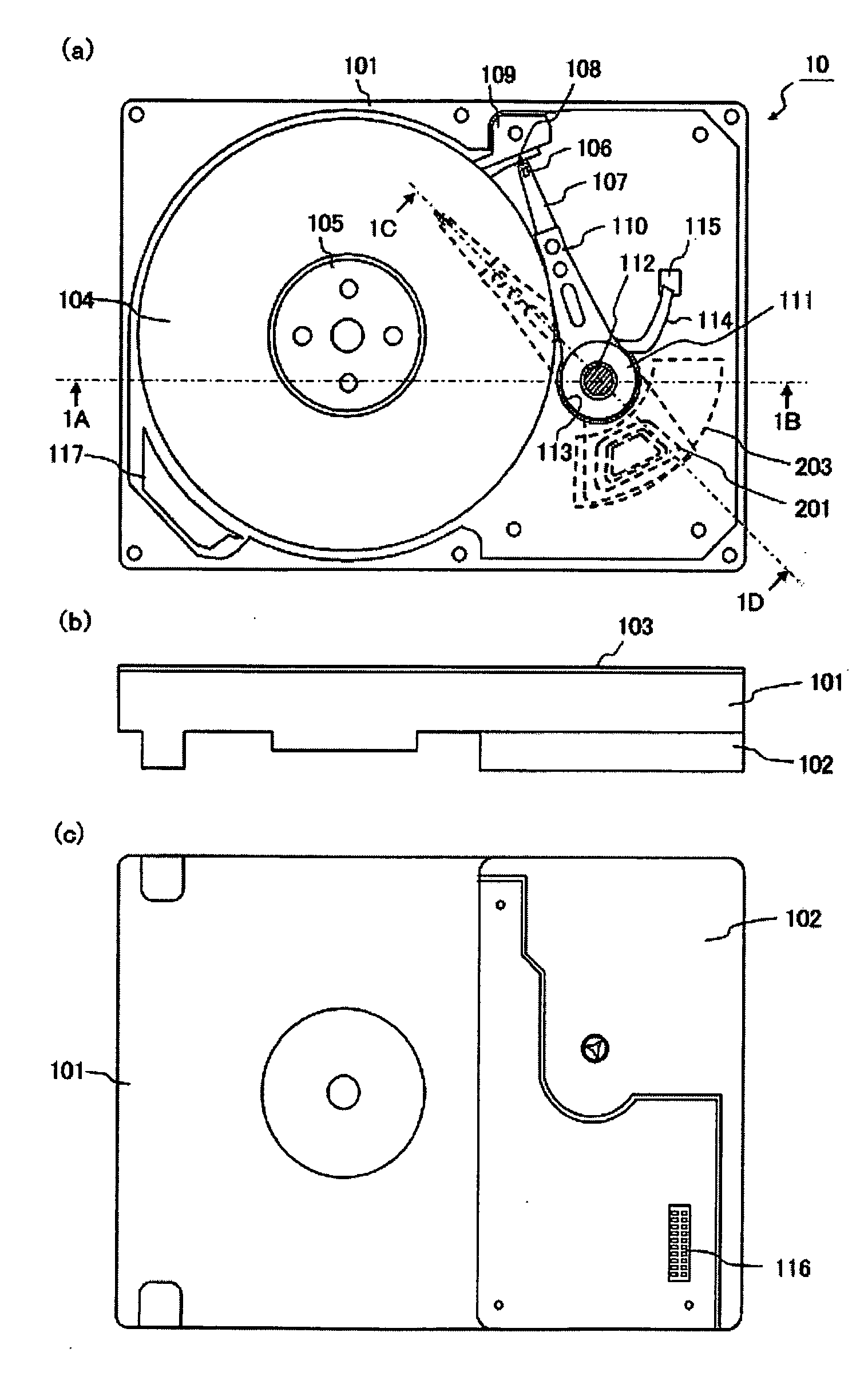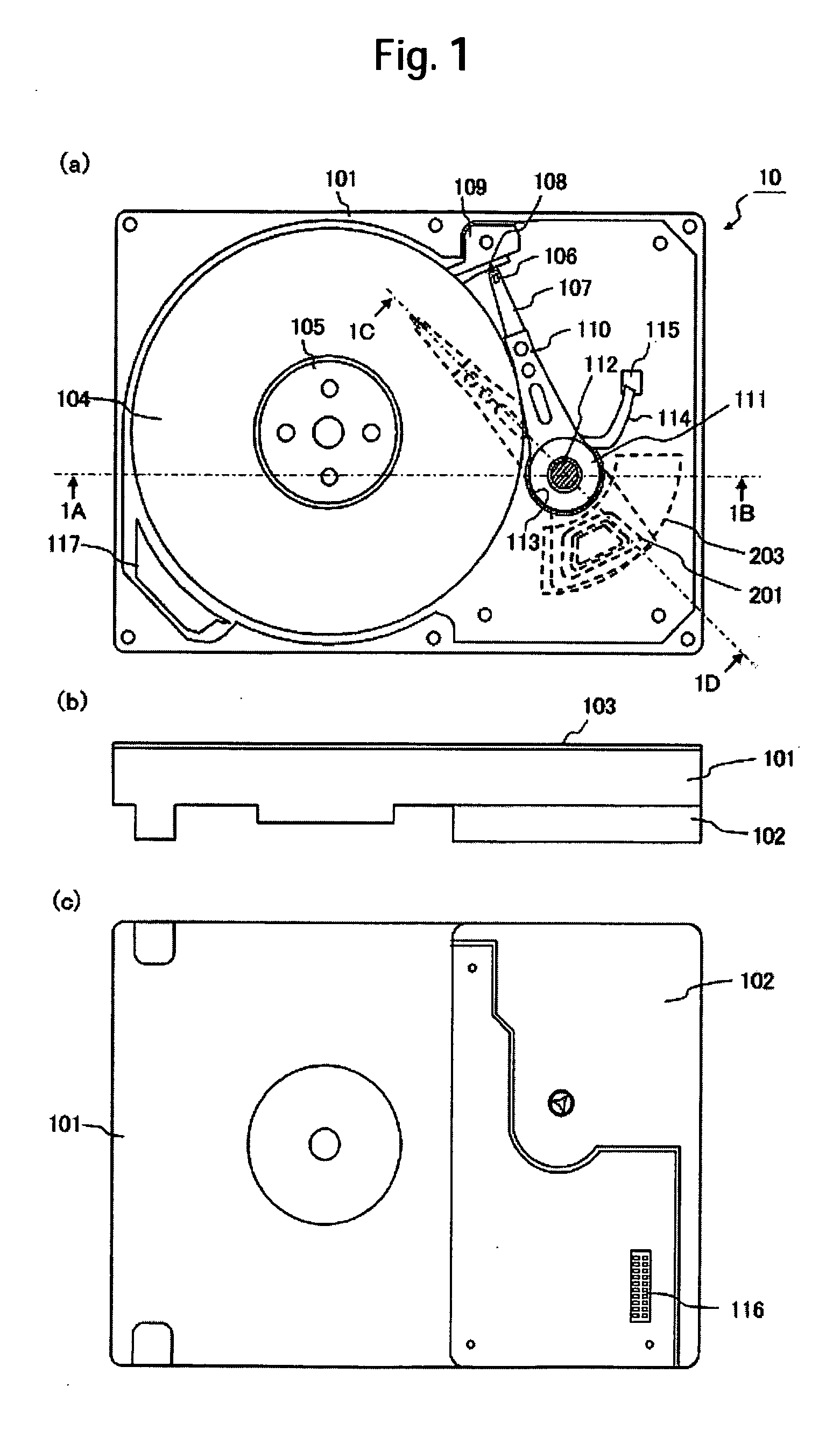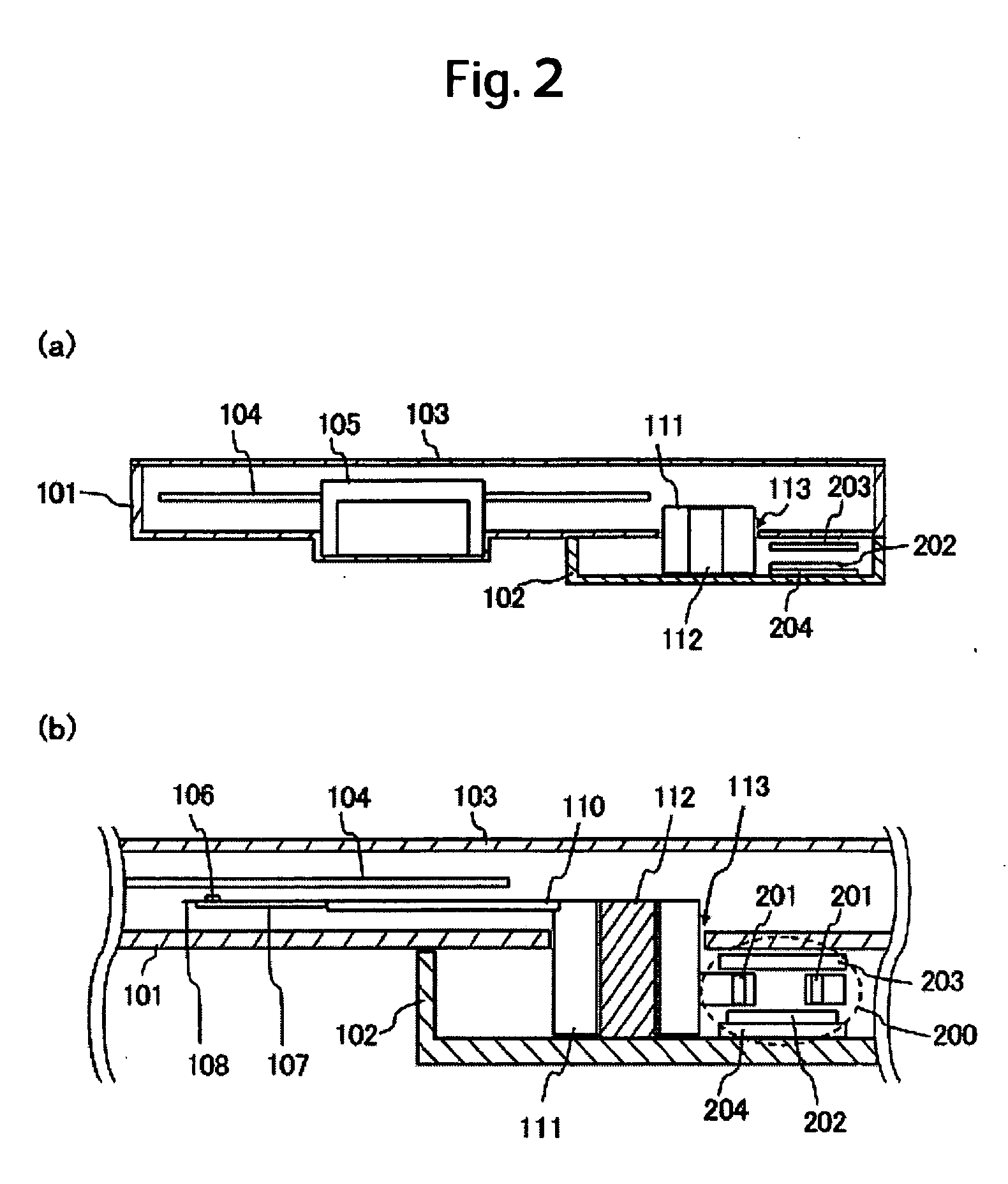Magnetic disk drive with isolation wall
- Summary
- Abstract
- Description
- Claims
- Application Information
AI Technical Summary
Benefits of technology
Problems solved by technology
Method used
Image
Examples
first embodiment
of the Invention
[0031] A first embodiment of the present invention is an LUL type of magnetic disk drive to which the invention is applied. A general view of magnetic disk drive 10 according to the present embodiment is shown in FIG. 1. FIG. 1(a) is a front view of the magnetic disk drive 10 with a top cover 103 removed, FIG. 1(b) a side view of the magnetic disk drive 10, and FIG. 1(c) a bottom view thereof.
[0032] As shown in FIG. 1(b), the magnetic disk drive 10 is constructed so that a disk compartment enclosure 101 and a VCM compartment enclosure 102 are separated from each other and so that the VCM compartment enclosure 102 is secured to the bottom of the disk compartment enclosure 101. In this figure, a magnetic disk 104, a spindle motor (SPM) 105, a slider 106, a suspension 107, a head arm 110, and other elements are stored within the disk compartment enclosure 101. Also, components of a VCM 200, such as VCM coils 201 and a top yoke 203, are stored within the VCM compartment...
second embodiment
of the Invention
[0048] A general view of a magnetic disk drive 30 according to the present embodiment is shown in FIG. 4. FIG. 4(a) is a front view of the magnetic disk drive 30 with a top cover 303 removed, and FIG. 4(b) is a sectional view of the magnetic disk drive 30, taken along straight line 4A-4B in FIG. 4(a). The components that the magnetic disk drive 30 has are the same as those of the magnetic disk drive 10 according to the first embodiment of the present invention. Therefore, the same reference numeral is assigned to the same component and a description thereof is omitted hereunder.
[0049] The magnetic disk drive 30 is featured by the fact that a pivot shaft 112 and a VCM 200 are installed more internally to an outer circumference of a magnetic disk 104 than in the magnetic disk drive 10 according to the first embodiment of the present invention. Such a construction has not been adoptable in the construction having an isolation wall(s) vertical to a recording surface of ...
third embodiment
of the Invention
[0050] A general view of a magnetic disk drive 40 according to the present embodiment is shown in FIG. 5. FIG. 5(a) is a front view of the magnetic disk drive 40 with a top cover 403 removed, and FIG. 5(b) is a sectional view of the magnetic disk drive 40, taken along straight line 5A-5B in FIG. 5(a). The components that the magnetic disk drive 40 has are the same as those of the magnetic disk drive 10 according to the first embodiment of the present invention. Therefore, the same reference numeral is assigned to the same component and a description thereof is omitted hereunder.
[0051] The magnetic disk drive 40 differs from the magnetic disk drive 10 in that a disk compartment and a VCM compartment use a single common enclosure 401. In the magnetic disk drive 40, an installation location for a VCM 200 is shrouded with an isolation wall 404 in order to form the VCM compartment and isolate the VCM 200 from a magnetic disk 104.
[0052] To fix the isolation wall 404 to t...
PUM
 Login to View More
Login to View More Abstract
Description
Claims
Application Information
 Login to View More
Login to View More - R&D
- Intellectual Property
- Life Sciences
- Materials
- Tech Scout
- Unparalleled Data Quality
- Higher Quality Content
- 60% Fewer Hallucinations
Browse by: Latest US Patents, China's latest patents, Technical Efficacy Thesaurus, Application Domain, Technology Topic, Popular Technical Reports.
© 2025 PatSnap. All rights reserved.Legal|Privacy policy|Modern Slavery Act Transparency Statement|Sitemap|About US| Contact US: help@patsnap.com



